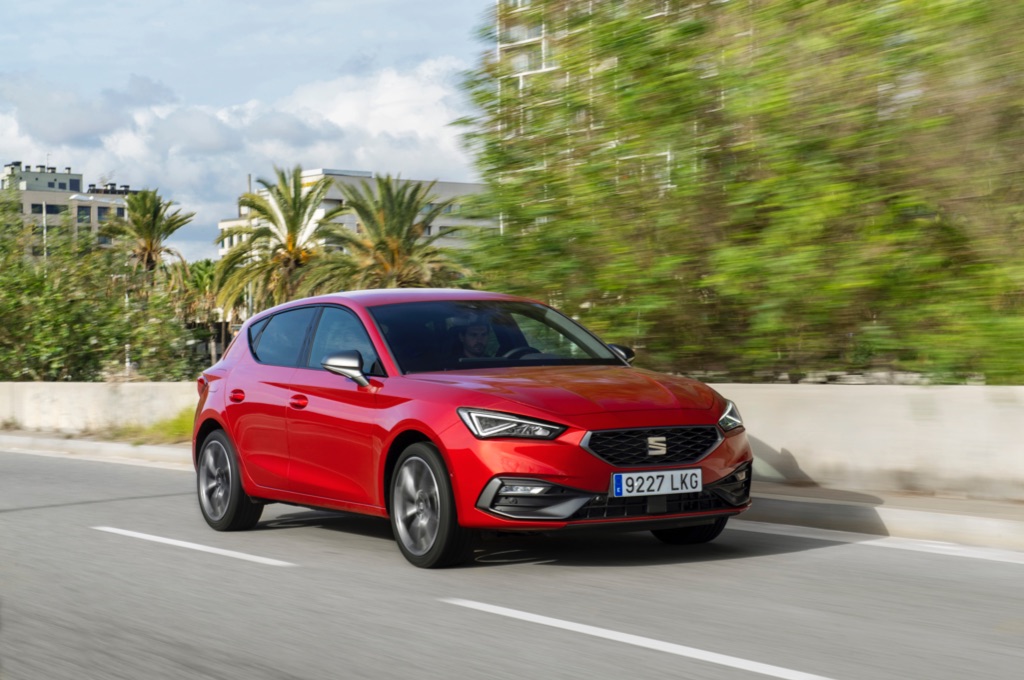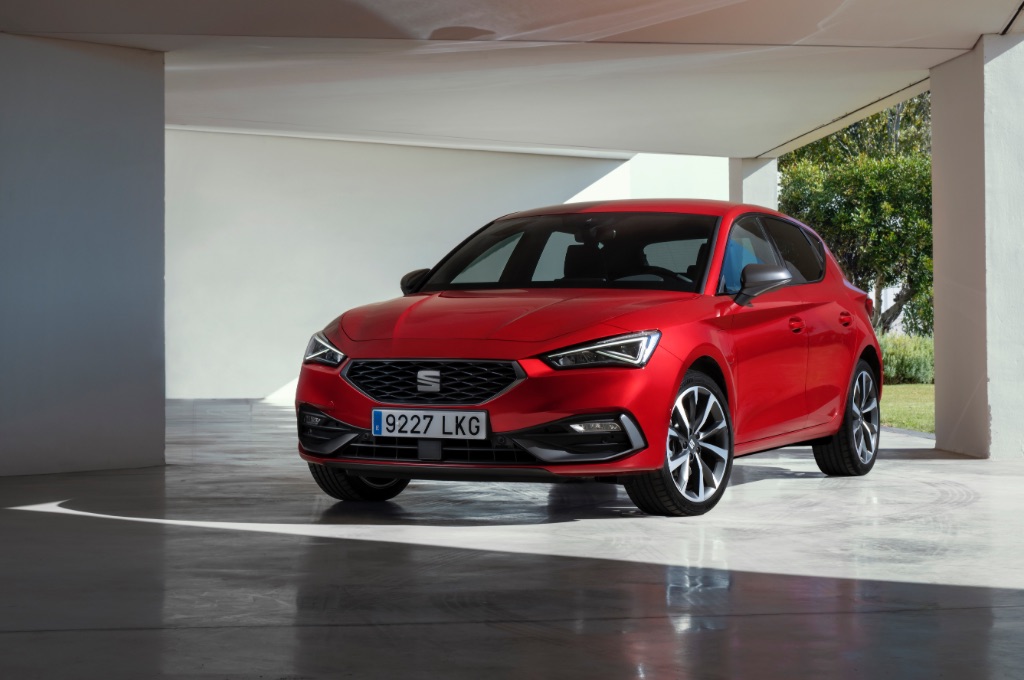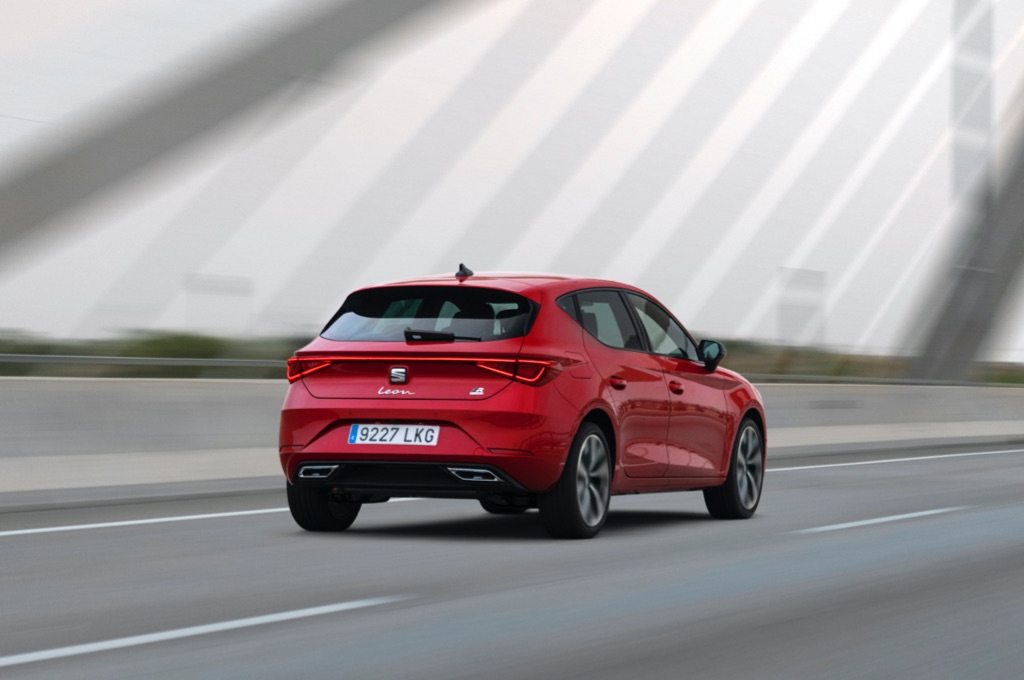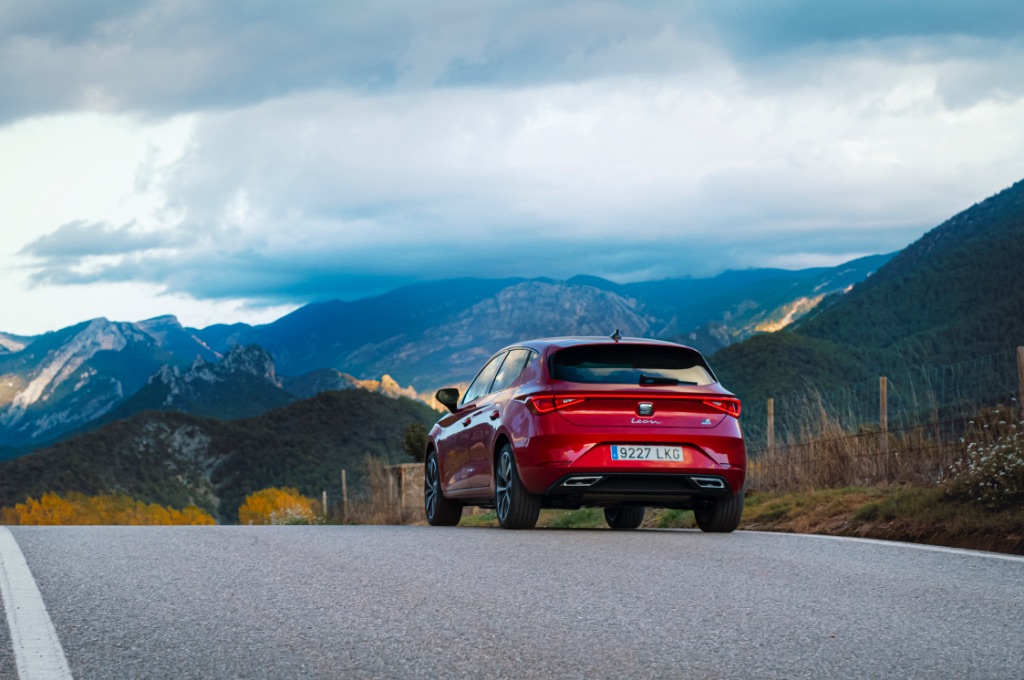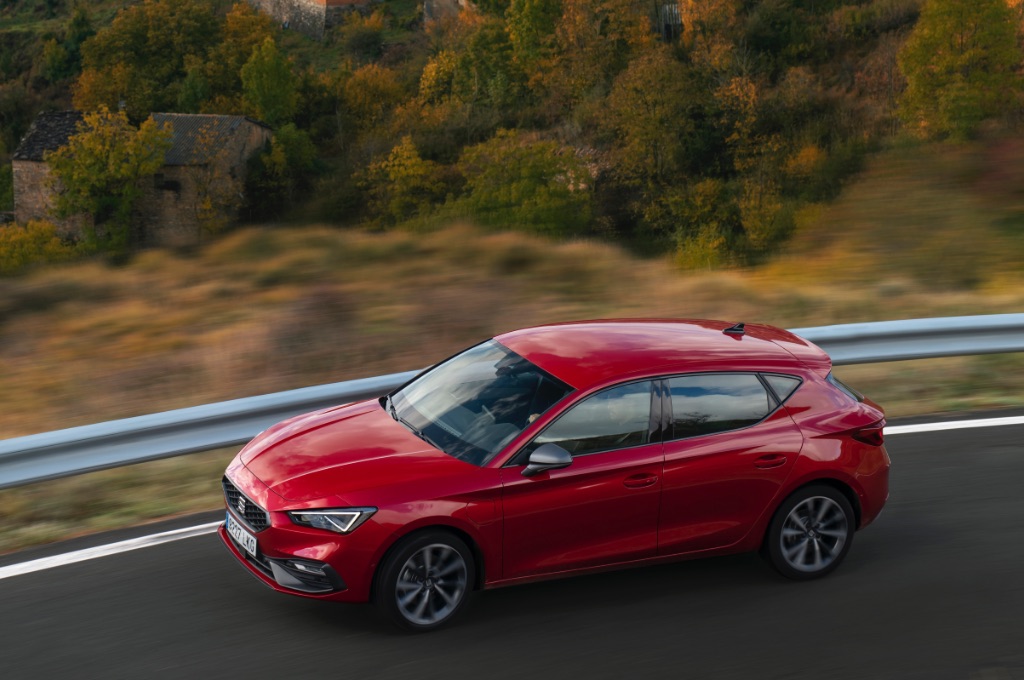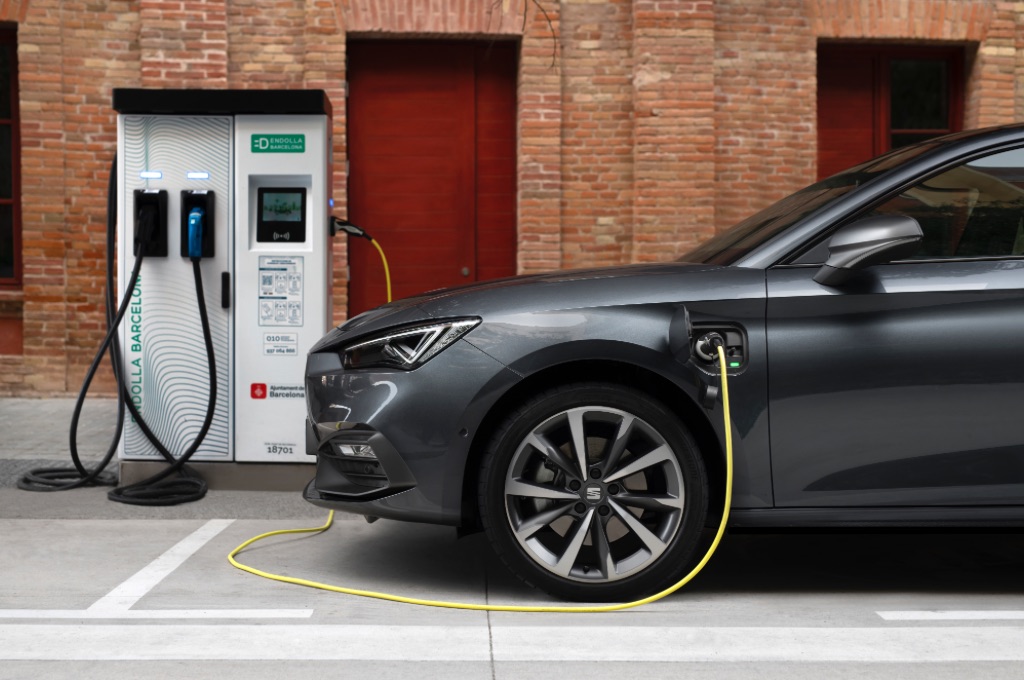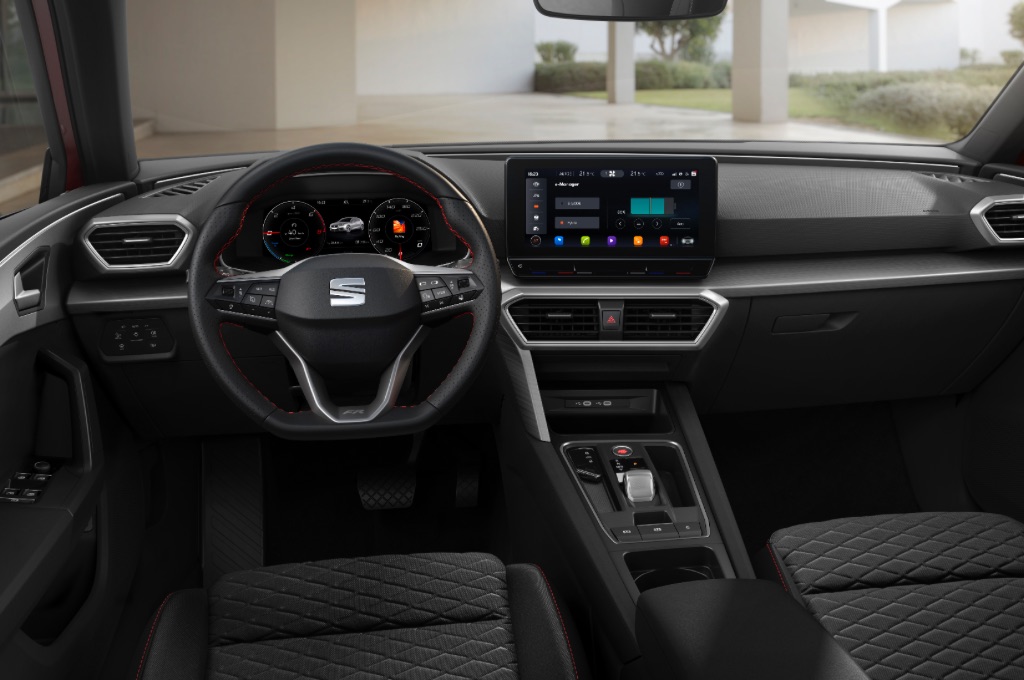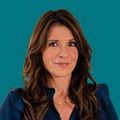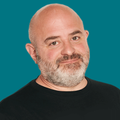Dimensions, design and practicality
The Seat Leon has long been a favourite with those motorists who want a good value, well equipped family hatchback that also has a touch of energy and sportiness to its handling. This is the niche that Seat fills, in between its close siblings – the Volkswagen Golf and Skoda Octavia, both of which sit on the same ‘MQB’ platform as the Seat Leon.
This generation of the Seat Leon arrived in 2020, and is the fourth generation of the Spanish brand’s popular family hatchback. You can get it with a variety of petrol engines, including a couple of mild hybrid options, but here we’re focussing on the plug-in hybrid Seat Leon e-Hybrid, which – happily – is also offered in the Seat Leon Estate.
This hybrid system gets a 1.4-litre turbocharged petrol engine, plus a 13.1kWh lithium-ion battery pack and an electric motor that can drive the Leon for up to 40 miles, according to official WLTP tests.
It’s not the most striking-looking hatchback, the Leon. It’s certainly inoffensive, but it’s hardly very memorable; this is always a subjective matter, but the Vauxhall Astra and Peugeot 308 are much more striking and appealing designs to these eyes. Or, if you can stretch to the extra money it costs, the Cupra Formentor compact SUV (another platform-mate to the Seat, also offered with plug-in hybrid tech) is a sportier and more style-focussed alternative.
Still, the Leon is a practical-enough family car, but the boot in the hatchback is quite compromised by the batteries hiding beneath. With only 270-litres of boot space, it’s really small by class standards going by the official capacity figures, but in reality the boot floor is still a good size and the low load lip makes it easy to slide heavy items in. Most of the boot capacity (150 litres) that the e-Hybrid has lost over the non plug-in Leons, is in the depth of the boot, so we’d still say that this is a useful-enough boot for most small families.
You can also get the Leon e-Hybrid Estate, which gets a useful 470 litres, and is a great option if you want an electrified family car that’s practical yet understated and good value next to most other PHEVs. Naturally, you can drop the rear seats in a 60/40 split in both the Leon hatch and estate, for a smooth, extended load bay.
Rear passenger space is great in the Leon – there’s tons of legroom; much more than you get in the Peugeot 308, for instance, and even more than you get in the VW Golf, so getting two bulky car seats in will be no problem.
Up front, it’s easy to get comfortable in the Seat Leon – especially if you go for the FR Sport that’s our pick of the range, with its powered lumbar adjustment, heated seats and steering wheel, and microsuede upholstery. The touchscreen system and dash have can be fiddly to use, at times, especially the touch-sensitive sliders on the lower edge of the screen, which control the temperature and volume. They’re just very annoying and imprecise, so voice control and/or the steering wheel controls are your friends in the Leon.
It feels classy enough, but there’s non of the style flair that you might expect from a Seat – and it’s certainly a long way off the perceived quality and plushness of the Mercedes A250e plug-in hybrid.
Technology
The Seat Leon e-Hybrid gets the same infotainment software and 10-inch touchscreen as the Volkswagen Golf Mk8, albeit with slightly different design and layout. It’s got a bad reputation for glitches, with the screen prone to freezing and being slow to ‘wake up’ when you turn the car on, but the system has been updated a number of times since the original launch and is gradually improving.
When it’s working properly, the system is good, with crisp graphics and all the features you want including sat-nav, Bluetooth audio streaming and handsfree connectivity, as well as Android Auto and wireless Apple CarPlay to mirror your phone’s apps on the car’s screen.
By the standards of some rivals, including the Kia XCee’d plug-in hybrid, the Seat Leon is a bit short on some tech features – especially adaptive cruise control and traffic sign display, which is optional on every Leon e-Hybrid. You can also add further upgraded assistance systems, to include a semi-autonomous drive mode, exit assist that tells you if there’s a bicycle or car coming when you’re about to open your door, and automatic high beam assist.
Battery, range and charging
The Seat Leon has a 13.1kWh lithium-ion battery with a usable capacity of 12.8kWh, which is good for a range of up to 40 miles, but expect more like 24- to 35 miles in real world use. As with any electric car, the range will drop in colder weather and/or faster driving, while warmer weather will see better efficiency and range.
You can also tell the Seat to stay in electric mode, or just leave it in hybrid mode, when the car will shuffle power between the petrol- and electric-powertrains as it sees fit – in our experience, even hybrid mode will simply stay in EV mode until the battery charge is nearly used up, unless you accelerate really hard to fire up the petrol engine. You can also tell the car to hold the charge for later in the journey.
Charging is slow on the Leon; at 3.6kW maximum it’ll take four hours for a charge even at a dedicated home car charger, while a normal three-pin domestic socket will do the same in around five hours. The cables you need for plugging into a standard domestic plug or at a normal Type 2 charger (which includes all home charging stations and the vast majority of public charging stations in Europe) are provided as standard with the Seat Leon e-Hybrid.
Driving
The Seat Leon e-Hybrid is a tidy, confident car to drive. With 201bhp on tap for a 0-62mph time of 7.5sec, it’s got a satisfying turn of pace when you want it. The six-speed DSG dual-clutch automatic gearbox is smooth enough, too; it can be a bit hesitant to change down a gear if you go for a sudden burst of acceleration, but most of the time it’s smooth and easy to ignore. The little 1.4 TSI turbocharged petrol engine is a cheerful engine that’s happy to rev, too. You do notice the vibration and a change in the throttle response when the petrol engine kicks in, but it’s not intrusive or alarming.
In electric mode, the Seat is really smooth and pleasant to drive, and it’ll do motorway speeds without bothering the petrol engine, provided you accelerate fairly moderately.
Handling in the Seat is enjoyable, with light but precise steering that weights up predictably as you go through a corner; you feel confident placing it on the road and carrying good speed through a corner, making this one of the more fun plug-in hybrid hatches to drive.
Ride comfort is a touch firm, but not jarring or uncomfortable, so many will consider it a reasonable price to pay for the more enjoyable handling that the Seat offers.
Pricing and availability
The Seat Leon is good value next to rivals; the Kia XCeed is a touch cheaper and better equipped, but the Seat goes further on electric power, typically has lower-priced finance deals on offer, and we also prefer the Seat’s tidier handling and quieter drivetrain. The Seat also has low C02 emissions of 26g/km, which help to make it very affordable for company car users who are paying Benefit in Kind tax (BiK).
Mind you, the Leon only gets a three-year, 60,000 mile warranty (eight years and 100,000 miles on the battery); on a par with the Mercedes A-Class PHEV, but significantly less than you get with the seven-year warranty of the Kia XCeed and Kia Niro plug-in hybrids.










